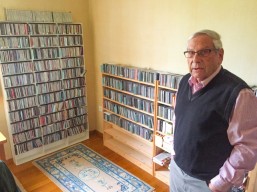
The viola at the music school: A long awakened sleeping beauty |
Thanks to professional groundwork, the viola is equal to other instruments at music schools as of today.

The specialist representative for violin and viola at the Musikschule Konservatorium Zürich MKZ (Music School Conservatory Zurich) Ursula Schlatter, breaks any viola stereotypes right at the beginning of our conversation. Neither parents nor kids seem biased about the viola. During the info workshops in spring, Switzerland’s largest music school has been providing, for many years, separate rooms to try all the instruments – including the viola. The viola used to be treated as the violin’s sidekick, but these times have passed. Kids often compare the sound, then choose unprejudiced the instrument they like the most. Thanks to the great availability of high-quality kids instruments, there’s barely any reason not to start with the viola. In the past, less than ideal practices were common, like stringing a violin with viola strings due to a lack of child sized instruments – an absolute no no, as experts agree. Experts and understanding teachers offer kids who they see suitable as violists to play the larger string instrument, every now and then. Some kids find a lasting interest in the dark and powerful sound. In Zürich, nobody has to worry about ensemble playing opportunities when choosing their instrument. Every kid can play somewhere at the MKZ: all grades feature multiple ensembles, early orchestra, orchestra, symphony orchestra and bands.
Targeted support
The statistics state that the number of viola students at the MKZ is steadily growing. While back in 2001/02 there were only 12 students, today there are 45. The majority starts on the violin, then changes to the viola later, however more often than not students choose to start out on the viola (4 kids in the academic year 2018/19, for example). The MKZ orchestras support the change to the viola, by providing instruments free of charge. The training is further supported by the string classes, a program offered in collaboration with the Volksschule. Many kids make their first contact with the viola here.
As of today, many violin students at conservatories also study a minor in viola. That’s why many violinists also make qualified viola teachers, at least in the beginning grades. The MKZ currently employs 51 violin teachers, thereof 17 who double in viola. A few perform on the viola, but also teach violin.
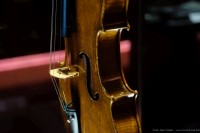
by Girolamo Amati (1548-1630)
In pedagogic regards there’s no difference between the instruments, says Ursula Schlatter, however between the instruments there is: the sizes and their operation, sound and sonority diverge noticeably. Ursula Schlatter usually forwards her viola students to a viola expert, once they reach a certain level.
Ursula Schlatter rejects attempts of allocating young students to an instrument based on their character: «This is a tricky decision. Characters develop as we grow older. This kind of allocation is too early for kids.»
For adults however, characteristics matter for their choice of instruments: «An alpha leader won’t play the viola. The effort to fit in is bigger with the viola, than it is with the other string instruments.»
Stay tuned for part 2:
The Viola at university: Increasing Demand
Easy pieces, suitable/written for beginners
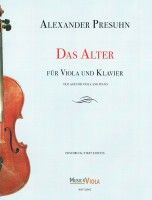
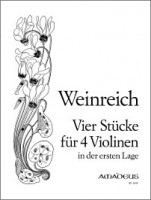
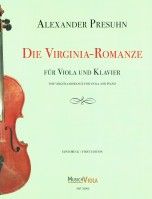

Niklaus Rüegg
This blog article is written by Niklaus Rüegg, graduate of the Zurich International Opera Studio, graduate of the Basel Opera Academy, twice winner of the Migros Gifted Scholarship, numerous engagements in opera, operetta, musicals and concerts in Switzerland and abroad.
Rüegg has also been working as a music journalist for ten years and is responsible for the association pages of the VMS (Verband Musikschulen Schweiz) in the Schweizer Musikzeitung. As a young man, Niklaus Rüegg had played the violin and viola.
Photos: Niklaus Rüegg and Mark Walder
|
Write an input |
2. Find the composer or work for which you want to write an input.
3. On the right side: click on «Write an input».
Pseudonym
Your input will only be published under your pseudonym. Under «My account» you can enter your pseudonym at any time.
| You may also be interested in |
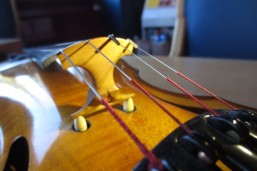
(Thomastik-Infeld Strings)
I am in the process of restringing my Ritter viola with Belcanto strings by Thomastik-Infeld. Part of me loves the process, part of me despises it. I am happy for these are the only strings that fulfill my needs on this specific instrument. And I am unhappy about…
» To the viola blog
Keeper of a Viola Treasure
The literature described in his epochal viola guide «Music for Viola» has all been played, described on index cards and archived by Konrad Ewald himself. Most of it is, or was, in his possession and is neatly arranged and filed.
» To the viola blog
Viola news letter |
 Do you don't want to miss any news regarding viola anymore? Our monthly viola news letter will keep you informed.
Do you don't want to miss any news regarding viola anymore? Our monthly viola news letter will keep you informed.» Subscribe to our viola letter for free
|
|
 Visit and like us on Facebook.
Visit and like us on Facebook.» Music4Viola on Facebook

